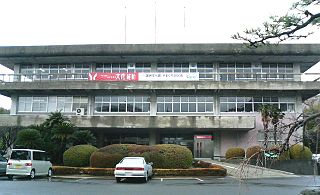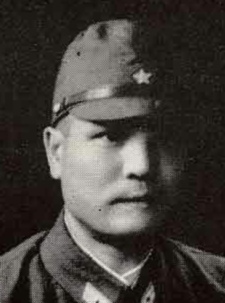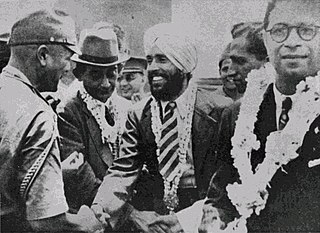A royalist supports a particular monarch as head of state for a particular kingdom, or of a particular dynastic claim. In the abstract, this position is royalism. It is distinct from monarchism, which advocates a monarchical system of government, but not necessarily a particular monarch. Most often, the term royalist is applied to a supporter of a current regime or one that has been recently overthrown to form a republic.

The 0 series trains were the first generation Shinkansen trainsets built to run on Japan's Tōkaidō Shinkansen high-speed line which opened in 1964. The last remaining trainsets were withdrawn in 2008 after 44 years of service.

The 700 series is a Japanese Shinkansen high-speed train type built between 1997 and 2006, and entering service in 1999. Originally designated as "N300" during the development phase, they formed the next generation of shinkansen vehicles jointly designed by JR Central and JR-West for use on the Tokaido Shinkansen, Hakata Minami Line and the San'yō Shinkansen. Though it has since been withdrawn from service on the Tokaido Shinkansen, it still operates on the San'yō Shinkansen and Hakata Minami Line.

Hikari is a city located in Yamaguchi Prefecture, Japan. As of 31 May 2023, the city had an estimated population of 49,100 in 23577 households and a population density of 530 persons per km². The total area of the city is 92.13 square kilometres (35.57 sq mi). The name Hikari itself means "brilliance" or "light" in Japanese.

Hikari is the name of a high-speed train service running on the Tokaido and San'yō Shinkansen "bullet train" lines in Japan. Slower than the premier Nozomi but faster than the all-stations Kodama, the Hikari is the fastest train service on the Tokaido and Sanyo Shinkansen that can be used with the Japan Rail Pass, which is not valid for travel on the Nozomi or Mizuho trains.

The Mitsubishi F1M was a Japanese reconnaissance floatplane of World War II. It was the last biplane type of the Imperial Japanese Navy, with 944 built between 1936 and 1944. The Navy designation was "Type Zero Observation Seaplane" (零式水上観測機).

Pokémon: Diamond and Pearl is the tenth season of the Pokémon anime series, and the first and titular season of Pokémon the Series: Diamond and Pearl, known in Japan as Pocket Monsters Diamond & Pearl. It originally aired in Japan from September 28, 2006, to October 25, 2007, on TV Tokyo, and in the United States from April 20, 2007, to February 1, 2008, on Cartoon Network. Covering the continuing adventures of series protagonist Ash Ketchum and Pikachu, and his best friend Brock, the two meet a new coordinator named Dawn, who travels with them through Sinnoh and enters Pokemon Contests.

The Yokosuka B4Y was a carrier-borne torpedo bomber used by the Imperial Japanese Navy Air Service from 1936 to 1943. The B4Y replaced the Mitsubishi B2M2 and was the last biplane bomber used operationally by the Imperial Japanese Navy. The Allied reporting name was "Jean".
The Imperial Japanese Army Nakano School was the primary training center for military intelligence operations by the Imperial Japanese Army during World War II.
The Nakajima Hikari was a nine-cylinder, air-cooled, radial aircraft engine developed in Japan for Navy use during World War II by the Nakajima Aircraft Company. It was a development of the Nakajima Kotobuki and Wright Cyclone. In Army use it was known as the Ha20.

Iwaichi Fujiwara was an officer in the Imperial Japanese Army in World War II, and later a lieutenant general in the post-war Japan Ground Self Defense Force.

Fujiwara kikan was a military intelligence operation established by the IGHQ in September 1941. The Unit was transferred to Bangkok at the end of that month and headed by Major Fujiwara Iwaichi, chief of intelligence of the 15th army. Its task was to contact the Indian independence movement, the overseas Chinese and the Malayan Sultans with the aim of encouraging friendship and cooperation with Japan. The unit was notable for its success in establishing cooperative ties between the Empire of Japan and the Indian independence movement, overseas Chinese and various Malay sultans.
The Iwakuro Kikan, or I Kikan, was an intelligence mission and liaison office for the Imperial Japanese Army and Indian National Army during the Second World War in the South-East Asian theatre. Headed by Colonel Hideo Iwakuro, it succeeded the F Kikan in liaising with the Indian Independence League and the Indian National Army under Captain Mohan Singh. After the revival of the Indian National Army under Subhas Chandra Bose, the Hikari Kikan replaced the I Kikan.
The First Indian National Army was the Indian National Army as it existed between February and December 1942. It was formed with Japanese aid and support after the Fall of Singapore and consisted of approximately 12,000 of the 40,000 Indian prisoners of war who were captured either during the Malayan campaign or surrendered at Singapore. It was formally proclaimed in April 1942 and declared the subordinate military wing of the Indian Independence League in June that year. The unit was formed by Mohan Singh. The unit was dissolved in December 1942 after apprehensions of Japanese motives with regards to the INA led to disagreements and distrust between Mohan Singh and INA leadership on one hand, and the League's leadership, most notably Rash Behari Bose. Later on, the leadership of the Indian National Army was handed to Subhas Chandra Bose. A large number of the INAs initial volunteers, however, later went on to join the INA in its second incarnation under Subhas Chandra Bose.
The Farrer Park address was an assembly of the surrendered Indian troops of the British Indian Army held at Farrer Park in Singapore on 17 February 1942, two days after the Fall of Singapore. The assembly was marked by a series of three addresses in which the British Malaya Command formally surrendered the Indian troops of the British Indian Army to Major Fujiwara Iwaichi representing the Japanese military authority, followed by transfer of authority by Fujiwara to the command of Mohan Singh, and a subsequent address by Mohan Singh to the gathered troops declaring the formation of the Indian National Army to fight the Raj, asking for volunteers to join the army.

Ural Maru was a 6,377-ton Japanese merchant vessel, used as a transport ship and hospital ship during World War II. She was torpedoed and sunk with the loss of some 3,700 lives on 27 September 1944.

The San'yō Shinkansen (山陽新幹線) is a line of the Japanese Shinkansen high-speed rail network, connecting Shin-Osaka in Osaka with Hakata Station in Fukuoka, the two largest cities in western Japan. Operated by the West Japan Railway Company, it is a westward continuation of the Tōkaidō Shinkansen and also serves other major cities in between on Honshu and Kyushu islands such as Kobe, Himeji, Okayama, Hiroshima, and Kitakyushu. The Kyushu Shinkansen continues south of Hakata to Kagoshima. The San'yō Shinkansen connects Hakata with Osaka in two and a half hours, with trains operating at a maximum operating speed of 300 km/h (186 mph) for most of the journey Some Nozomi trains operate continuously on San'yō and Tōkaidō Shinkansen lines, connecting Tokyo and Hakata in five hours.

Ultraman Mebius Side Story: Hikari Saga is a Japanese direct-to-video web series launched by FLET'S Square, Japan's first internet television delivery service. The web series was available to be watched from June 30, 2006 until March 31, 2007 whereas DVD release of the miniseries is available under the label Bandai Visual.
St. Signpost Co., Ltd. is an animation studio subsidiary of Pierrot. The studio is an associate-member of The Association of Japanese Animations.

The activities of the Central Intelligence Agency (CIA) in Japan date back to the Allied occupation of Japan. Douglas MacArthur's Chief of Intelligence, Charles Willoughby, authorized the creation of a number of Japanese subordinate intelligence-gathering organizations known as kikan. Many of these kikan contained individuals purged because of their classification as war criminals. In addition, the CIA organized and financed a Japanese intelligence gathering program, Operation "Takematsu", utilizing the kikan as part of an intel gathering operation against North Korea, the Kuril Islands, and Sakhalin. One of the kikan created, the "Hattori group", lead by Takushiro Hattori, plotted to stage a coup d'etat and assassinate Prime Minister Shigeru Yoshida on account of his opposition to Japanese nationalism.













